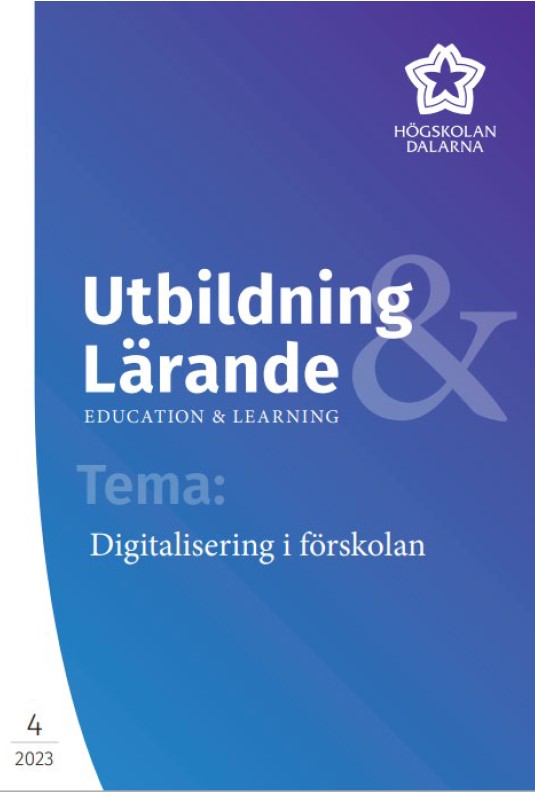Barns hybrida lek i förskolan
DOI:
https://doi.org/10.58714/ul.v17i4.18268Nyckelord:
Play, preschool, digital, hybrid, multimodalityAbstract
This article discusses play as hybrid, where play activities with digital and analogue tools are so interlaced that they are one common play activity: a playground which is both physical and digital. With four empirical examples from two research projects the article wants to illustrate hybrid play which is rather unexplored. With the purpose to problematize and contribute to the discussion of children's hybrid play by using a theoretical model research questions are: How is children's hybrid play expressed in preschool and what the obstacles and opportunities with the hybridity for children's play? The theoretical model presents five concepts of relevance for understanding children’s hybrid play (multimodal participatory literacies, performing self, explore, contribute and connect) in preschool. The article concludes with a new definition of hybrid play and suggest that digital play is always hybrid. The multimodality means that children are allowed to participate in more ways, hybrid play requires children to connect. Educators can both enable and hinder hybrid play, enabling by for example using creative apps, allowing digital tools as a natural part of free play and recognizing children's narratives.
Downloads
Publicerad
Referera så här
Nummer
Sektion
Licens
Copyright (c) 2023 Marina Wernholm, Sara Hvit Lindstrand & Susanne Kjällander

Det här verket är licensierat under en Creative Commons Erkännande 4.0 Internationell-licens.
Författaren/författarna behåller copyright till verket.



